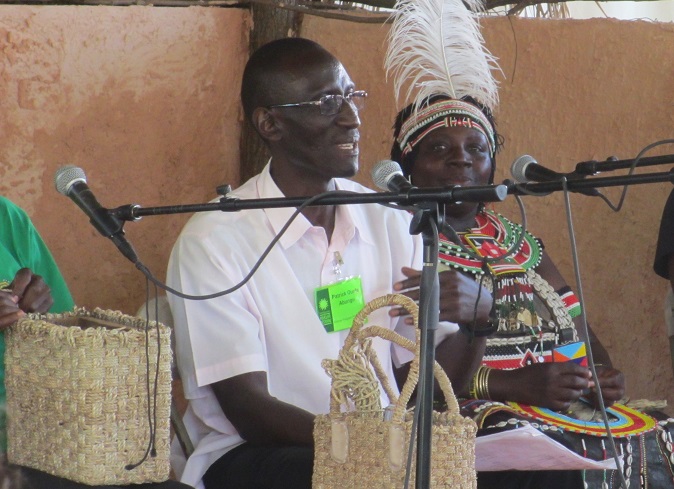Cross-Cultural Connections at the Festival

Before beginning my internship with the Smithsonian Center for Folklife and Cultural Heritage, I could not have imagined what a chaotic, enlightening, exhausting and truly wonderful event the Folklife Festival would turn out to be. As with any large-scale event, a few things went awry—schedules changed, participants disappeared before or even during their sessions, materials sent from Kenya were damaged on the journey or had to improvised locally—but one of the best parts of the Festival was coming together with other staff members and participants to invent, rearrange, and reschedule in order for the event to continue successfully.
My official job during the event was assisting Center curator Olivia Cadaval with the organization of cross-program sessions, in which Kenyan and Chinese participants could get together for cross-cultural dialogues. A few days into the Festival, I also began an unofficial stint as a stage manager and assistant to one of the Kenyan presenters, Patrick Abungu, senior curator at the Shimoni Slavery Museum and Heritage Site at the National Museums of Kenya in Mombasa.

Patrick remained intensely dedicated to the Festival throughout the two weeks and became one of our most trusted and reliable presenters, sometimes mediating three or four forty-five-minute sessions in a row and as many as five a day. I met and interacted with nearly all of the Kenyan participants, making connections which I hope to maintain for years to come. My involvement behind the scenes helped me gain a huge appreciation for the Festival as the achievement in cross-cultural exchange that it is.
Participants engaged in some very meaningful exchanges during the cross-programs, a space where talking about ordinary aspects of life revealed similarities between cultures that participants and audiences alike couldn’t have imagined. One such interaction took place between members of pastoralist groups from China and Kenya; during a talk on herding they learned they confront similar challenges in the face of growing populations and shrinking open land areas for raising livestock and farming. The looks of understanding on the faces of two Inner Mongolians and a Kenyan Maasai who would otherwise never have met is what makes the Festival so valuable.

During an ethnic identity cross-program, one of the China participants, a Mongolian musician named Baoyin, remarked on the words of an astronaut: “Looking at the Earth from space, you don’t see divisions of countries or ethnic groups or colors. It’s just a space where the human beings live.”
The experiences of staff members, audiences, and participants at the Folklife Festival are a small, yet meaningful, step on the journey toward true understanding and acceptance of other cultures, and the realization that, whatever differences we may identify or construct, human beings are more alike than different.
Emily Fuller is an intern with the Center for Folklife and Cultural Heritage, currently beginning preliminary work for the 2015 program on Peru. She is majoring in anthropology and cinema studies at Oberlin College, and she is extremely grateful for the opportunity to work behind the scenes of the Festival this year.

